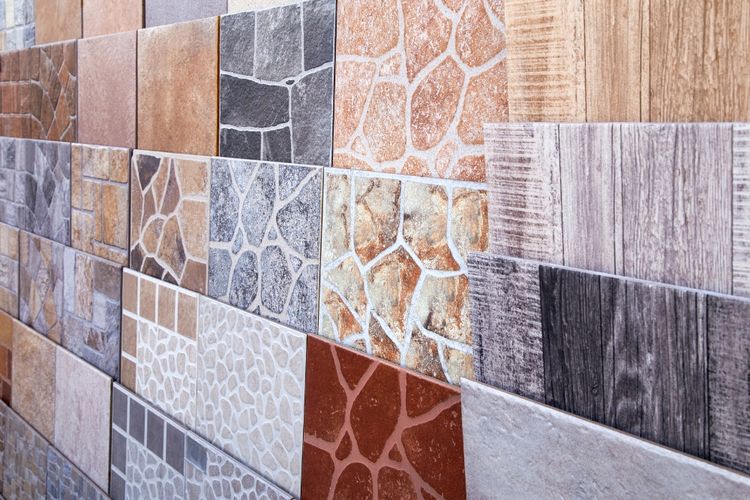Faux Stone Panels - Transform Your Home's Style in Hours
Faux stone panels offer homeowners a revolutionary way to elevate interior and exterior spaces without the cost, weight, or installation complexity of natural stone. These lightweight yet durable alternatives mimic the texture and appearance of authentic stone while providing practical benefits that make them increasingly popular in modern home design projects.

Faux stone panels have revolutionized home renovation by offering the timeless appeal of natural stone without many of the traditional drawbacks. These innovative panels allow homeowners to dramatically transform walls, fireplaces, kitchen backsplashes, and outdoor spaces in a fraction of the time traditional stonework would require. Made from materials like polyurethane, fiberglass reinforced concrete, or high-density polyethylene, these panels capture the authentic look and texture of natural stone while being significantly lighter, more affordable, and easier to install.
What Are Faux Stone Panels?
Faux stone panels are manufactured products designed to replicate the appearance of natural stone materials like limestone, slate, river rock, or stacked stone. Unlike natural stone which must be quarried, cut, and individually placed, faux panels come in large, interlocking sections that cover substantial wall areas quickly. Most panels are made through molding processes that capture authentic stone textures from real stone surfaces, then colored with UV-resistant finishes to create remarkably realistic appearances.
Modern manufacturing techniques have dramatically improved the quality of faux stone products. Today’s options feature varied stone patterns, realistic color variations, and textural details that can be nearly indistinguishable from natural stone when properly installed. The panels typically range from 1/2 inch to 2 inches in thickness, making them substantially thinner and lighter than real stone veneer, which significantly simplifies the installation process and reduces structural requirements.
The Benefits of Faux Stone Panels
The advantages of choosing faux stone panels extend far beyond their aesthetic appeal. Weight reduction is perhaps one of the most significant practical benefits—while natural stone can weigh 40-50 pounds per square foot, faux alternatives typically weigh just 1-5 pounds per square foot. This dramatic difference eliminates the need for structural reinforcement that natural stone often requires, making installation possible on standard wall constructions.
Cost efficiency represents another compelling advantage. Faux stone panels generally cost 30-60% less than natural stone materials, with additional savings realized through simplified installation that doesn’t require specialized masonry skills. This makes high-end stone aesthetics accessible to homeowners working within modest renovation budgets.
Maintenance requirements are also substantially reduced with faux stone. Unlike natural stone which may require sealing, repointing, or specialized cleaning, most faux panels can be maintained with simple soap and water cleaning. Many products also offer enhanced resistance to moisture, UV damage, and temperature fluctuations compared to their natural counterparts.
Installation Made Easy
One of the most appealing aspects of faux stone panels is their straightforward installation process that many homeowners can manage as a DIY project. Most systems use simple attachment methods including construction adhesive, screws, or specialized mounting hardware. The panels typically feature interlocking edges or overlapping designs that help conceal seams between sections, creating a seamless stone appearance.
The average installation time for faux stone panels is remarkably efficient—a wall that might require days or weeks to cover with individual stone pieces can often be completed in just hours with faux panels. Basic tools like a circular saw or jigsaw for cutting, measuring tape, level, and caulking gun are usually sufficient for most installations. This accessibility has made stone aesthetics available to homeowners without professional masonry skills.
For those seeking professional installation, the process typically costs significantly less than traditional stonework, with many contractors completing projects in a single day rather than over multiple days or weeks. The panels’ lightweight nature also eliminates concerns about floor load capacity that often arise with natural stone installations.
Popular Applications
Faux stone panels have found their way into numerous applications throughout the modern home. Interior accent walls in living rooms and bedrooms create dramatic focal points without overwhelming spaces. Fireplace surrounds represent another common application, allowing homeowners to transform dated brick or plain drywall into sophisticated stone features that enhance the entire room.
In kitchens and bathrooms, water-resistant faux stone panels provide distinctive backsplash options that resist staining and moisture damage while complementing various countertop materials and cabinetry styles. Exterior applications have also become increasingly popular, with specially formulated outdoor panels used to enhance home facades, create wainscoting effects, upgrade porch columns, or define outdoor living spaces.
Commercial settings have embraced faux stone as well, with restaurants, retail spaces, and offices using these panels to create distinctive atmospheres that would be cost-prohibitive with natural materials. The versatility of modern faux stone products makes them suitable for virtually any space where the warmth and texture of stone is desired.
Eco-Friendly and Sustainable
The environmental benefits of faux stone panels present another compelling reason for their growing popularity. Natural stone extraction involves quarrying that can disrupt ecosystems and consume significant energy resources for extraction and transportation. Faux alternatives eliminate these environmental impacts while often incorporating recycled materials in their manufacturing processes.
Many manufacturers now produce panels using recycled content from post-industrial or post-consumer sources, particularly in polyurethane and polyethylene-based products. The durability of quality faux stone panels—many carrying warranties of 20-50 years—means they rarely need replacement, reducing long-term resource consumption. Their lightweight nature also reduces transportation emissions compared to shipping heavy natural stone materials.
For environmentally conscious homeowners, certain manufacturers offer panels that contribute to green building certification programs through low VOC emissions, sustainable manufacturing practices, and recycled content. These eco-friendly options allow consumers to achieve desired aesthetic results while minimizing environmental impact.
The transformative potential of faux stone panels has made them increasingly popular among homeowners seeking dramatic visual improvements without extensive renovation timelines or costs. As manufacturing techniques continue to advance, these versatile products will likely remain a staple in home improvement projects for years to come, offering the timeless appeal of stone with modern practicality.




